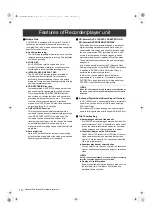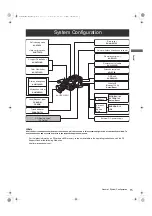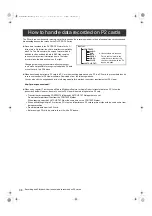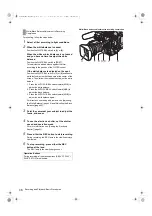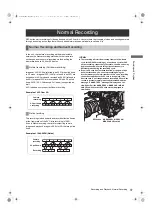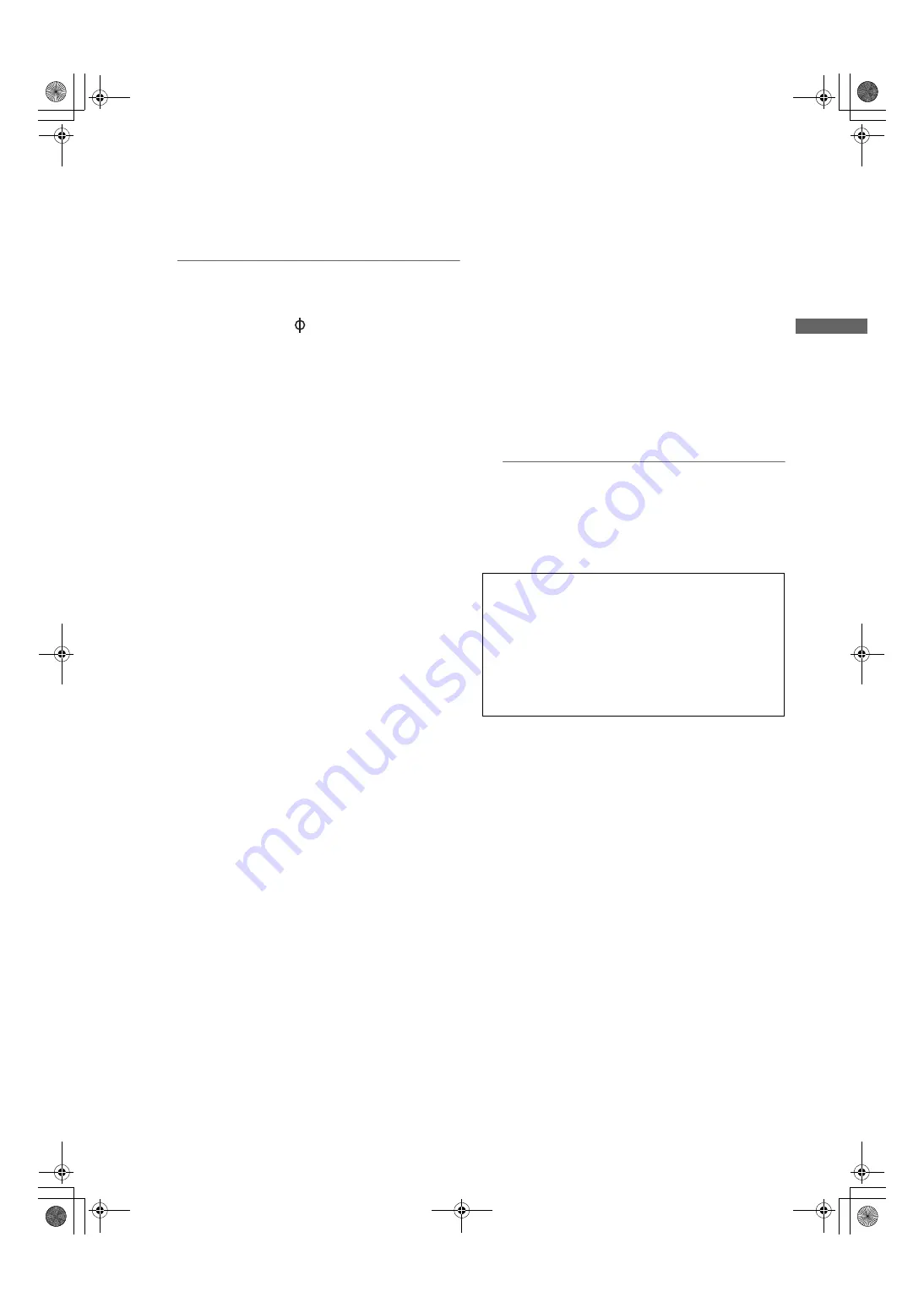
23
Parts and their Functions: Shooting and Recording/Playback Functions Section
Parts and
thei
r Fun
cti
on
s
17.
BUSY (operation mode display) lamp
This lamp indicates the active status of the SD memory
card.
It stays illuminated when the card is active.
Note
While the lamp is on, do not insert or remove the card. The
SD memory card might break.
18.
Focal plane index (
)
This symbol indicates the focal plane of the CCD
sensor.
It provides a reference for making accurate focal
distance measurements from the subject.
19.
MARKER SEL, MODE CHK / MENU CANCEL
switch
This is the dual purpose spring switch for MARKER
selection and MODE CHECK/MENU CANCEL.
When you press this switch on the side of this unit, the
marker displayed by the viewfinder changes. Press this
button on the side of this unit to switch the information
display screen for A and B, the two types of markers set
with the menu, A (A marker display)
>
B (B marker
display)
>
OFF (no marker display).
When the power is
turned on, the last selected indication before power-
down appears.
>
[Marker Check Screen Displays (MARKER SELECT
button function)] (page 86)]
When you pull this button toward you, a six screen
display for camera setting status (STATUS screen
display, !LED screen display, FUNCTION screen
display, AUDIO screen display, CAC screen display,
USER SW screen display) switch sequentially on the
viewfinder.
The camera output signal is not affected. The display
goes out in about 5 seconds. When the selected screen
is displayed, the display will continue while you press
the button.
While displaying the menu, this button works as a switch
to cancel changed setting values.
20.
Gain selector switch
Use this switch to select video amplifier gain, according
to lighting conditions under which you are shooting.
The values for L, M, and H can be preset using menu
options.
These are factory-set to 0 dB for L, 6 dB for M, and 12
dB for H.
21.
OUTPUT/AUTO KNEE selector switch
Used to select the video signals sent from the camera
unit to the memory, viewfinder and video monitor.
CAM. AUTO KNEE ON:
Video being recorded through the camera is sent with
the auto knee circuit activated.
It is also possible to assign the DRS (Dynamic Range
Stretcher) function instead of the AUTO KNEE
function.
CAM. AUTO KNEE OFF:
Video being recorded through the camera is sent in
manual knee mode.
BARS:
Color bar signal is output. The AUTO KNEE circuit
does not work.
You can select between four types of color bar signal.
>
[COLOR BARS] (page 184).
Note
With the factory settings, TEST TONE is output to all 4
channels of audio when OUTPUT/AUTO KNEE switch is
set to [BARS] and CH1 of AUDIO IN switch is set to
[FRONT].
The output method of TEST TONE can be changed in the
TEST TONE menu option.
>
[TEST TONE] (page 190)
22.
WHITE BAL (white balance memory selector)
switch
Used to select the white balance adjustment method.
PRST:
Use this when you have no time to adjust the
white balance.
The value for the white balance is factory-set
to 3200 K.
It can be changed to any color temperature
using a menu option.
>
[Setting Color Temperature Manually]
(page 51).
A or B:
Pressing the 4. AUTO W/B BAL Switch
toward [AWB] automatically adjusts the white
balance, saving the adjusted value in Memory
A or B.
Also, with menu settings you can assign B to
auto tracking white balance (ATW) of the auto
tracking mode.
>
[Adjusting the White Balance] (page 49).
Auto Knee function
Usually, when you adjust levels to shoot people or scenery
against a strongly lit background, the background will be totally
whited-out, with buildings and other objects blurred. In this case,
the AUTO KNEE function reproduces the background clearly. This
function is effective when:
•
The subject is a person positioned in the shade under a clear
sky.
•
The subject is a person inside a car or building, and you also
want to capture the background visible through a window.
•
The subject is a high-contrast scene.
AJ-HPX3100G(VQT3A79)_E.book 23 ページ 2010年9月17日 金曜日 午後9時21分


